Hungarian Falls (Upper, Middle Lower)
The Hungarian Falls Area is one of the most action-packed hiking areas in the Keweenaw Peninsula and features four large waterfalls and numerous smaller drops in between. Whether you’re looking for a leisurely stroll or want a more challenging hike down into the ravine created by Dover Creek.
If you’re seeking a short hike, the trek to the Upper and Middle Falls is the way to go. They’re easy to access and are easy enough for children to participate. If you’re after something more challenging, the hike to see the Lower and Seasonal Falls is much more difficult but well worth it if you’re physically able to make the trek. If the latter sounds too challenging, you can view both from above, but trees often overcrowd the scene.
Next, we’ll dive into all the waterfalls that make Hungarian Falls some of the best waterfalls in the Keweenaw Peninsula!
Or, jump to: Upper Falls | Middle Falls | Lower Falls | Seasonal Falls
| Height | ~20 feet |
| Beauty | 6.5/10 |
| Difficulty | 3/10 |
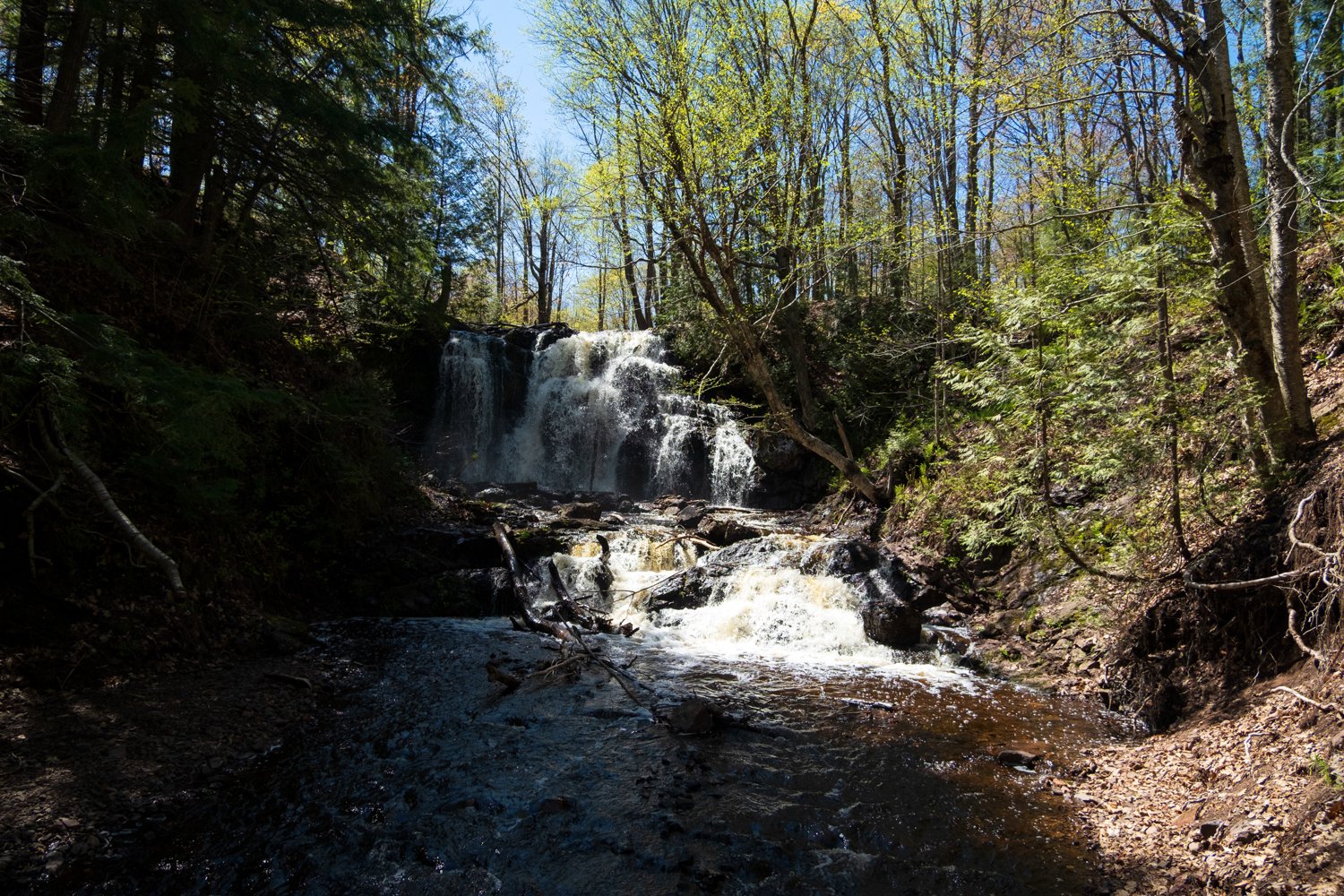
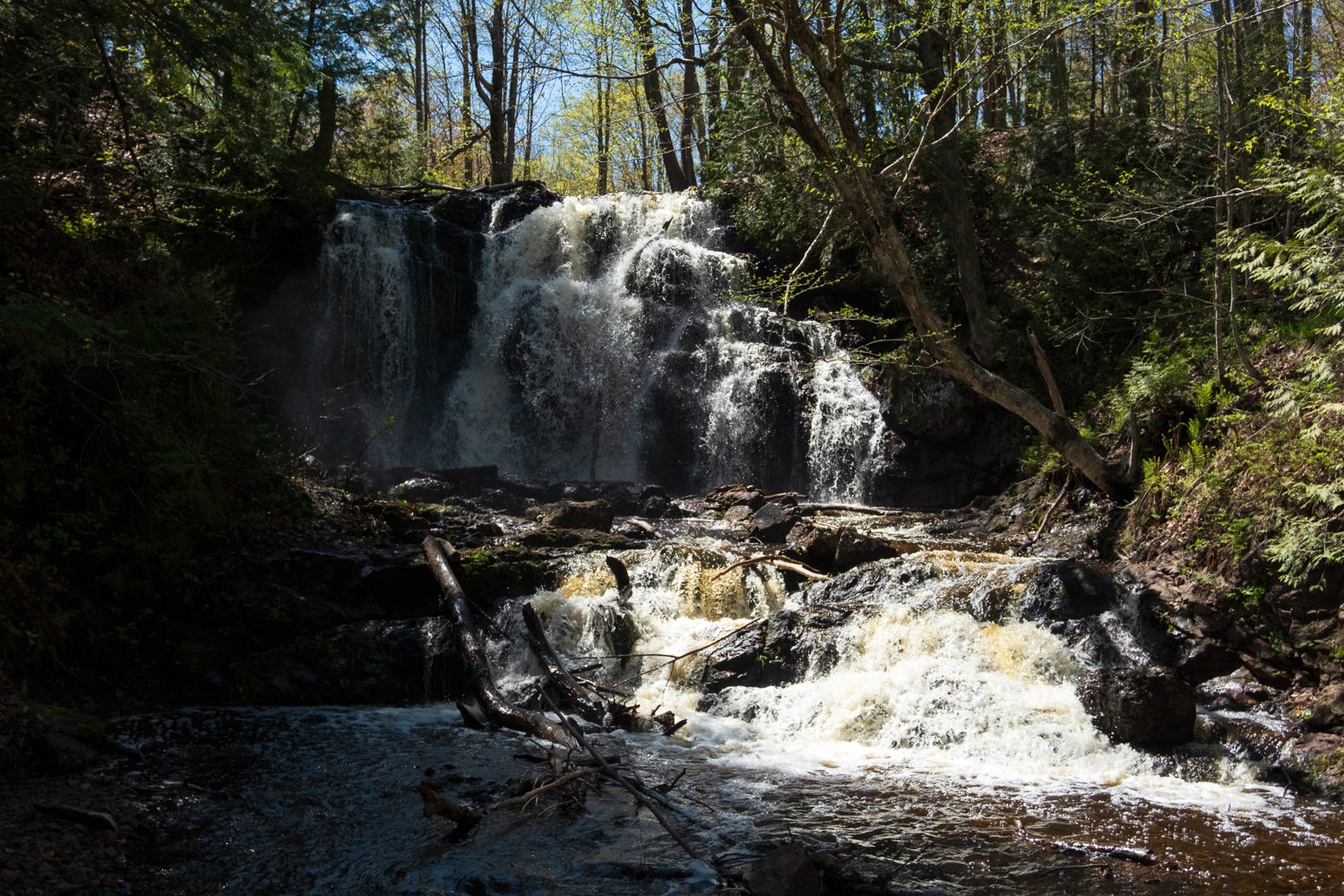
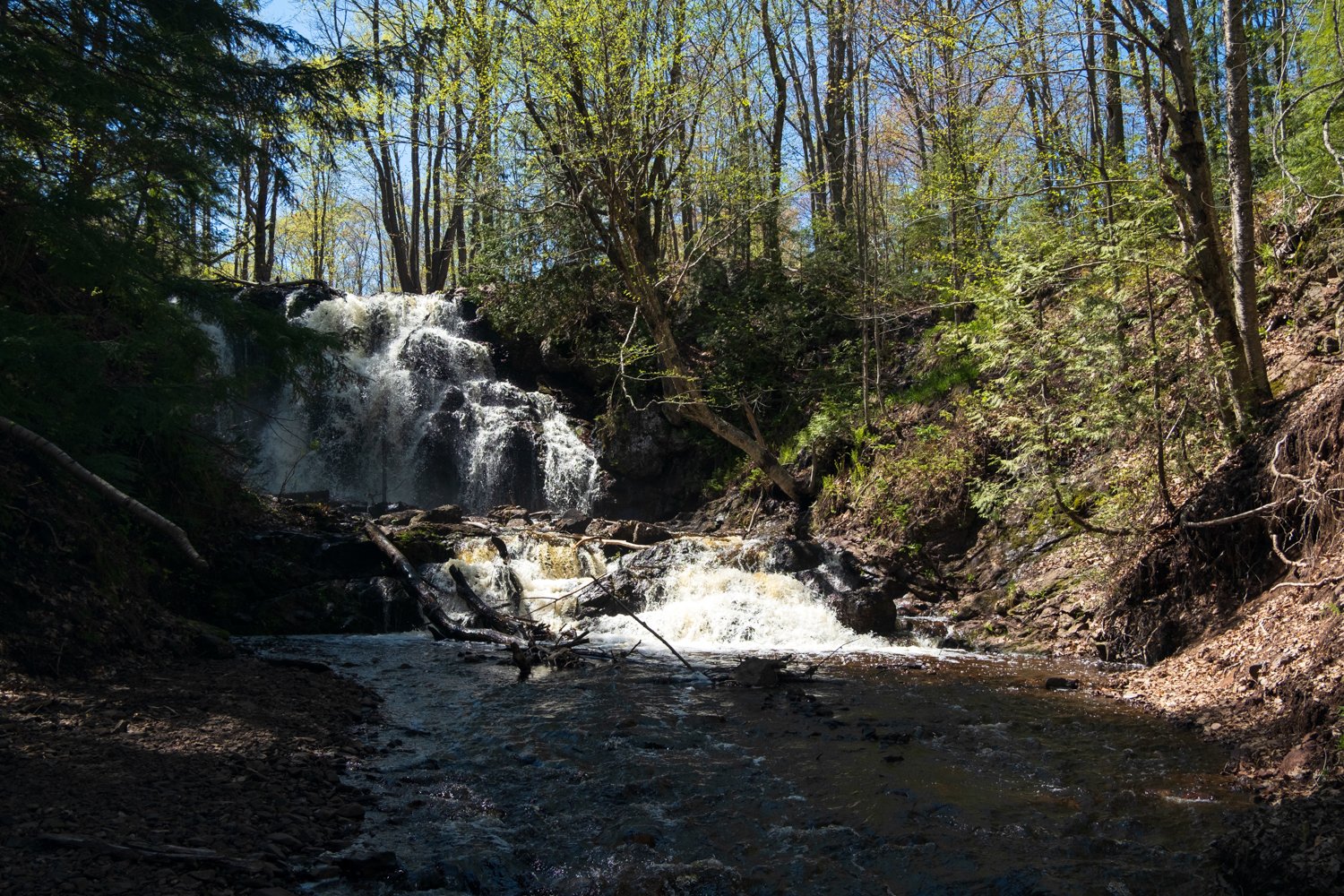
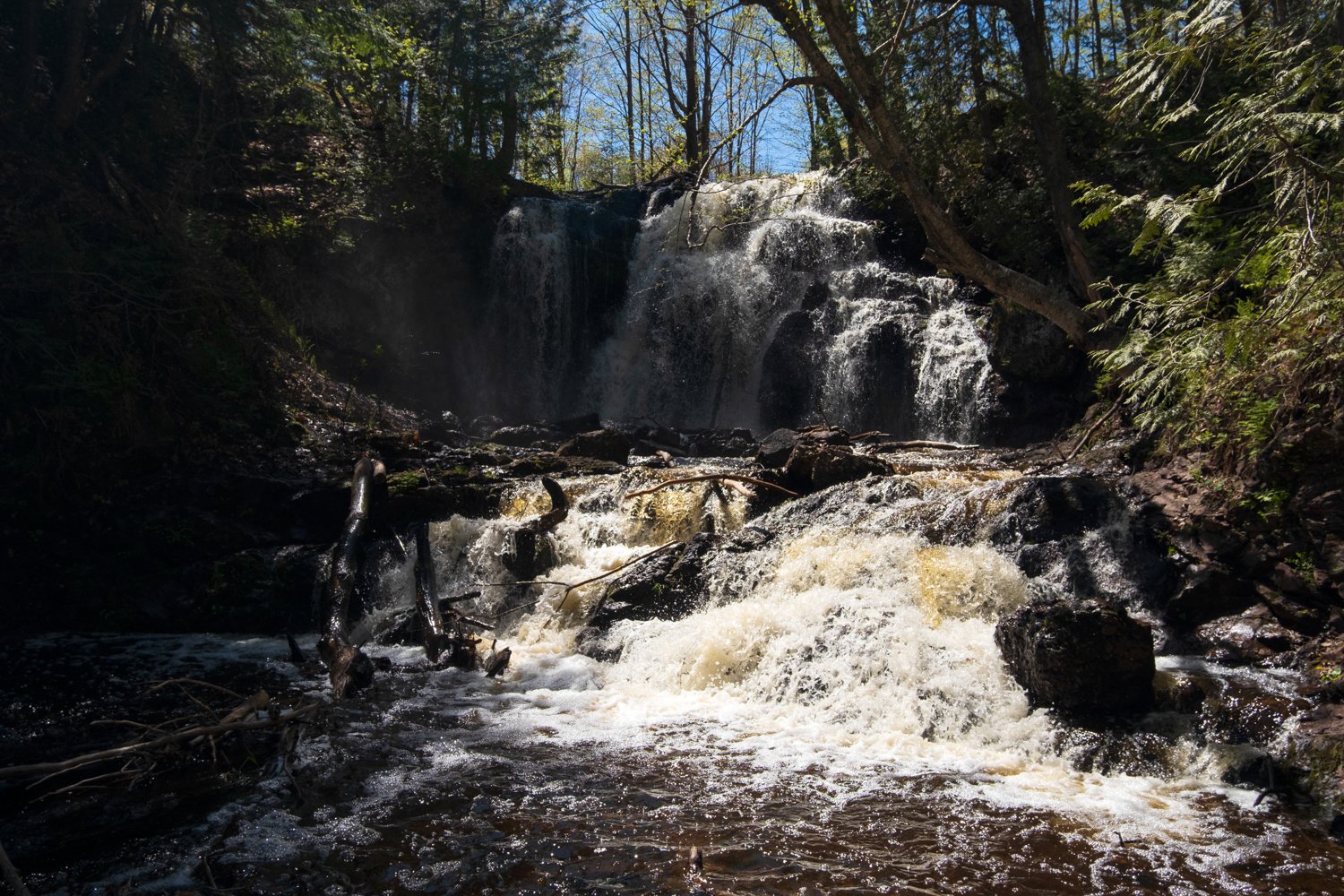
Although they’re the furthest walk away, Upper Hungarian Falls are some of the easiest to access in the Hungarian Falls Natural Area. The main trail spits you out below the falls, which are unique compared to the other waterfalls on Dover Creek. You could describe them as scraggly and rugged, which makes for a unique setting even when the water isn’t flowing very strongly, which is the case for most of the year. However, you’re in for a real treat in the early spring and late Fall!
Shortly downstream from Upper Hungarian Falls is the Dover Creek Reservoir, a body of water created by a small dam on the Dover Creek. The dam determines how powerful the remaining falls are; however, less water makes it over the concrete construction in the dry season.
Between the dam and Middle Hungarian Falls are a series of falls ranging in size from a rapid to an actual waterfall. There are a few manufactured falls here, too. The flow here will fluctuate greatly depending on the time of year and how much rain there has been.
| Height | ~20 feet |
| Beauty | 7.5/10 |
| Difficulty | 2/10 |
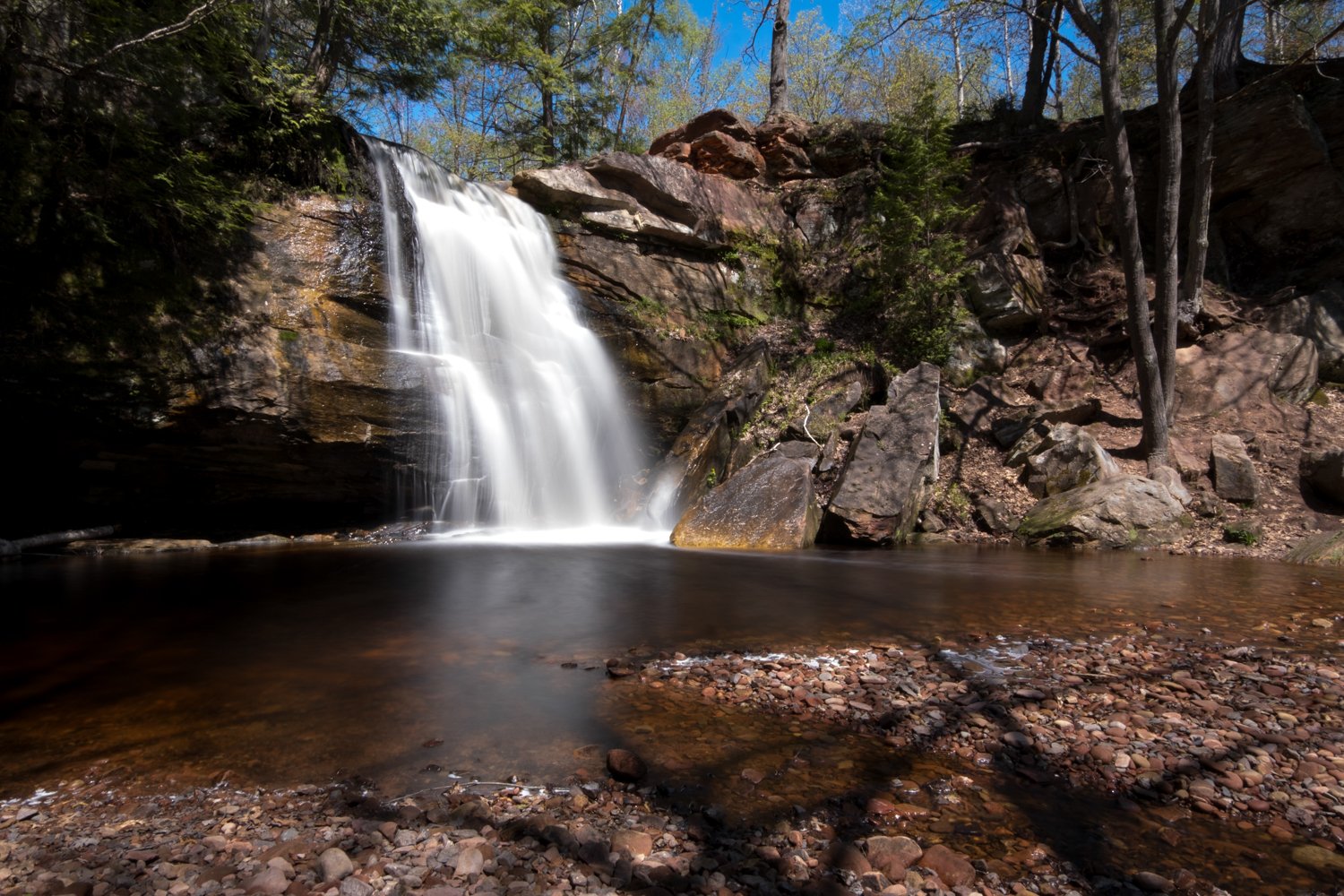
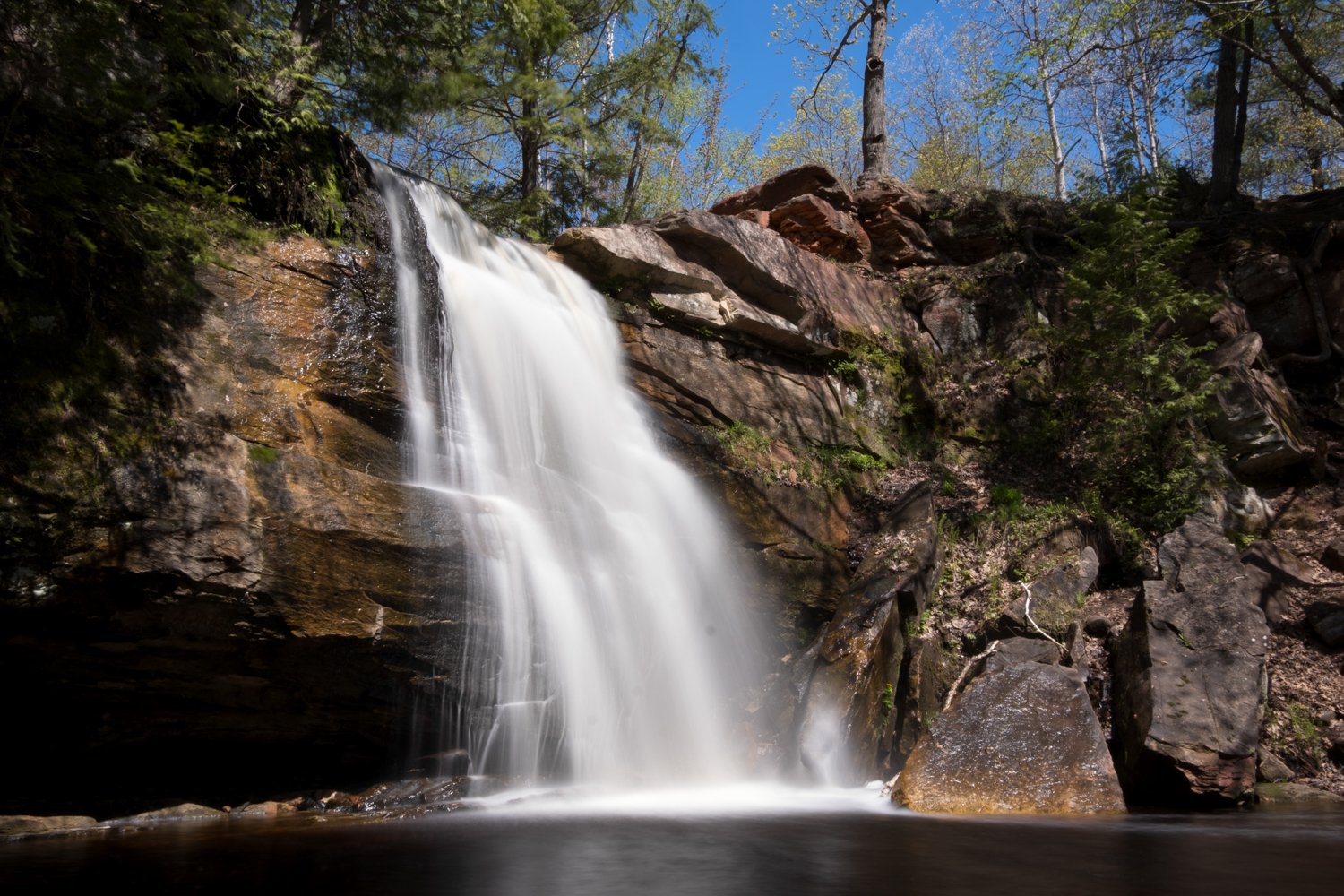
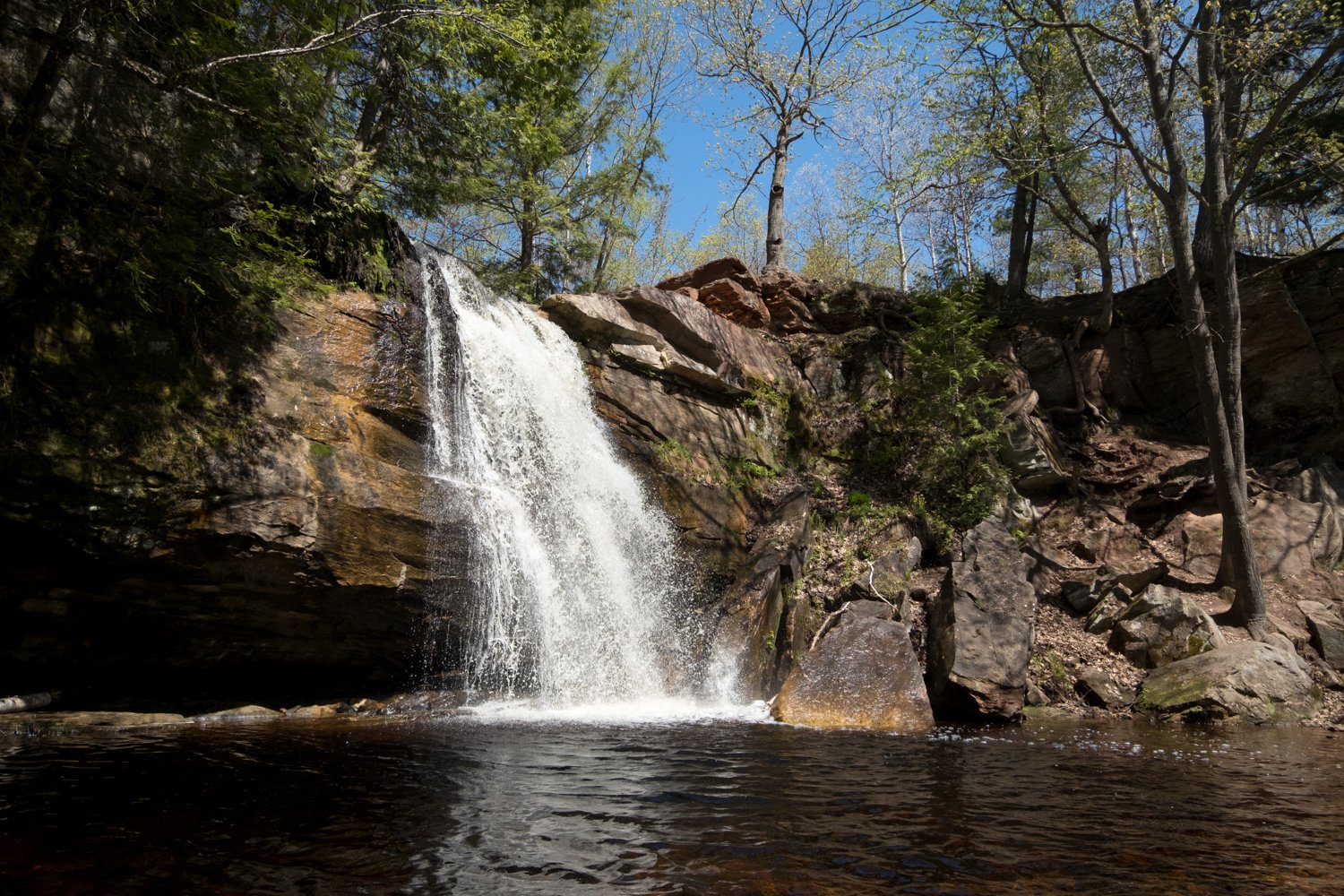
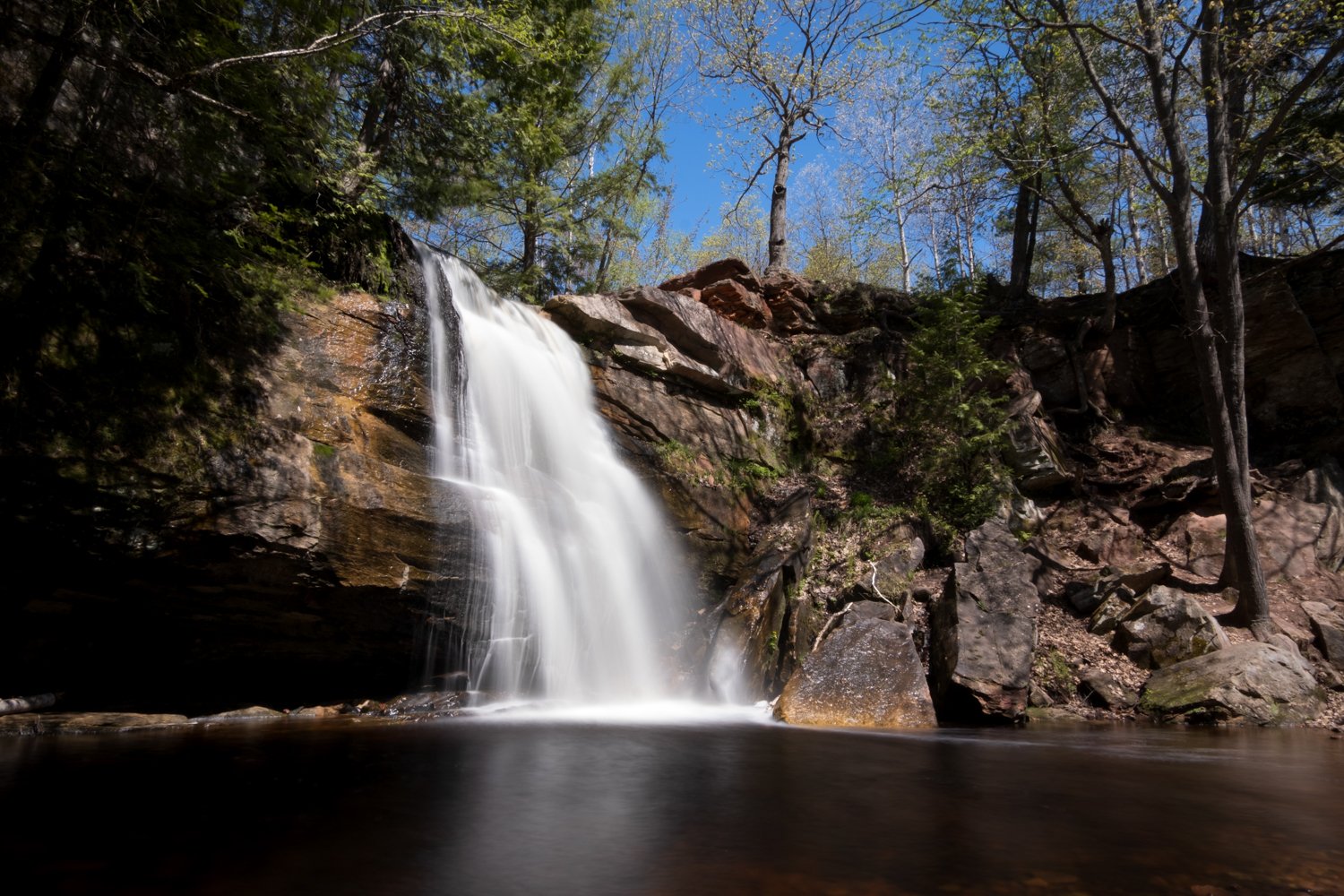
The most visited of all the waterfalls in the Hungarian Falls Natural Area is the Middle Falls. It’s the easiest to reach, the most accessible, and the easiest to interact with. That might seem like odd phrasing, but it’s hard to describe a waterfall you can experience in so many ways.
It’s simple to get a view from above the falls, and it’s a unique vantage point, as the falls and pool below feel incredibly volatile from this viewpoint. You can wade or swim in the pool below the falls, which is refreshing after a long hike. If you’re brave enough, you can edge along the cliff to get behind the falls, which is breathtaking. There are trails around this area that offer different views of Middle Hungarian Falls, and you could easily spend an hour at this waterfall alone. Be careful—not all explorers are kind, leaving behind broken bottles. Wear water shoes if you can!
From this point, things get tricky. Somewhere upstream from here, a small offshoot leaves Dover Creek when the water is high, meeting up with other seasonal tributaries from snowmelt and precipitation, forming another small creek. At this point, the trail forks, too, creating two paths, one on either side of the river, which we’ll cover later.
| Height | ~60 feet |
| Beauty | 9.5/10 |
| Difficulty | 9/10 |












Lower Hungarian Falls
Both of the remaining drops at the Hungarian Falls Natural Area are frustrating for the casual hiker. They’re the most significant two falls at the park, yet they’re the most difficult to view thanks to a substantial change in elevation, creating a ravine surrounded by trees and foliage. You can view both waterfalls from above, which is unique but doesn’t offer a proper display of how triumphant the waterfalls are.
Lower Hungarian Falls stands some 60 feet tall and, on its day, is the most powerful waterfall I’ve witnessed in Michigan. It appears almost out of nowhere if you’re traversing Dover Creek from upriver; however, its power and mist are impossible to miss if you’re trekking upstream from Hubbell.
Lower Hungarian Falls, like the rest of the waterfalls on Dover Creek, varies in flow throughout the year. When the snow is melting in the spring, the falls are the most powerful. When the dry season rolls around, they’re often reduced to little more than a trickle except when it rains for an extended period. When the leaves start changing, there’s more water here, but they’re the most majestic in the Spring.
| Height | ~75 feet |
| Beauty | 8/10 |
| Difficulty | 8.5/10 |






Seasonal Drop at Hungarian Falls
Hungarian Falls’ Seasonal Drop is taller than its Lower Falls, but it doesn’t have nearly as much flow, even in the springtime. The two falls are inverses of one another; the upper falls are vast and powerful, and the seasonal drop is skinny and weak most of the year.
During the spring snowmelt, there’s more than enough water to make this fall worth viewing. That said, the trail is often a lot more slippery at that time of year, so it’s more challenging to view this fall from the bottom of the gorge then.
North and South Ridge Trails
Depending on which path you take from the fork near Middle Hungarian Falls, you’ll have a unique experience. The South Ridge Trail offers better views of the waterfalls, but that isn’t saying much, as they’re both mostly covered by trees. The north ridge has better views of Dover Creek below and is a quick hike back to the car. Both trails will eventually take you to an old railroad line where you can quickly return to Golf Course Road or switch which path you’re on.
The converted ATV and snowmobile trail was originally a Copper Range Railroad line. At one time, there were three spans over the Dover Creek. This bridge over Dove Creek is triumphant and offers a view of the creek below and Torch Lake in the distance. In the Fall, the colors of the trees make this view even more spectacular.
Accessing the Lower Falls and Seasonal Drop
Let’s be honest; a few of you wanted to know how to get down to see the Lower and Seasonal Falls on Dover Creek as soon as we mentioned it.
Before we dive into the ways to reach the falls, here is a quick disclaimer. In the springtime, Dover Creek is extraordinarily powerful. It’s unwise to try to access these falls during that time of the year. When the water rages, numerous trees, rocks, and other large objects are dislodged and move around the ravine. This makes it hard to plan a trip down based on the expeditions of other explorers because the terrain is different than when they did the hike. No matter what time of year or trail you take, it isn’t easy to accomplish. If you aren’t comfortable on incredibly steep paths and climbing over rugged terrain, this isn’t a hike for you!
We did some research before attempting this hike; however, there isn’t much information online. There are numerous places where folks have traversed the ravine, but we’ll only cover the two we’re familiar with in this post.
Into The Ravine
The first is accessible via the South Ridge Trail. Shortly before the seasonal drop, when heading upriver from the former railroad bridge, a less steep portion of the cliff leads down to the creek. There are some ‘trails,’ but on our visit, these were covered in leaves and hard to follow. It’s important not to get too close to the seasonal drop, as it gets steeper the closer you get.
This trail is more accessible on the way down for obvious reasons but safer on the way up because you aren’t going to go tumbling down into the ravine as easily. On the way down, it’s best to use trees and other strong foliage as break points to ensure you don’t fall. However, it’s best not to dislodge things on your way down, as this can cause erosion.
This path will deposit you on the creekbed just below the seasonal drop. From there, you can traverse the creek upstream to find the Lower Falls. They’re easy to find, and you can hear them from the intersection of the two sections of the stream under the Seasonal Falls.
Another Way Down
The second route, which we took on our most recent visit, is much more difficult but extraordinarily rewarding. During the springtime or after heavy rains, this route may be inaccessible.
Starting from the old railroad bridge we mentioned earlier, getting down to the riverbed below is easy. There’s a trail leading down from the bridge's eastern side to the water.
Once you reach the riverbed, the trek upriver is laborious. You’ll have to cross the river multiple times, climb over fallen trees, scale boulders, and scale the side of the gorge on numerous occasions. In the summer dry season, this trek will likely be more accessible.
Eventually, you’ll start to hear the roar of rushing water. The seasonal drop will reveal itself first, jutting off to the left, and the upper falls will be at the end of your trek upriver.
Instead of trekking back down the creek, returning to the path mentioned near the seasonal drop is easier.
Our most recent hike to Lower Hungarian Falls took us on this route
Whether you’re looking for a leisurely hike to a stunning waterfall, a bushwhacking adventure to a massively powerful fall, or a quiet place to eat lunch, read a book, or enjoy the company of family and friends, Hungarian Falls is the perfect place for you. After visiting the falls, check out the numerous other waterfalls and various outdoor activities in the Keweenaw Peninsula. You made it this far; why not keep going?

